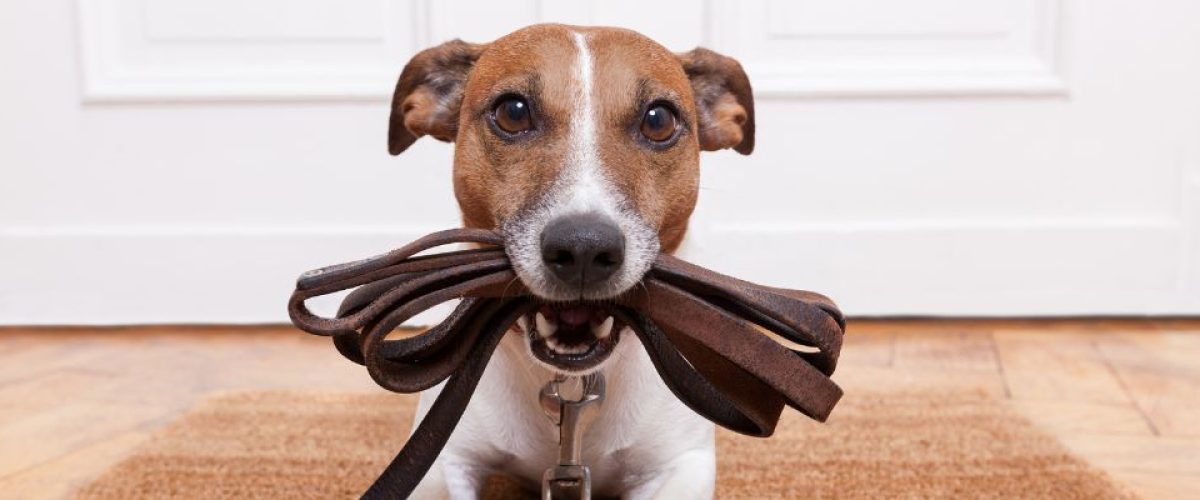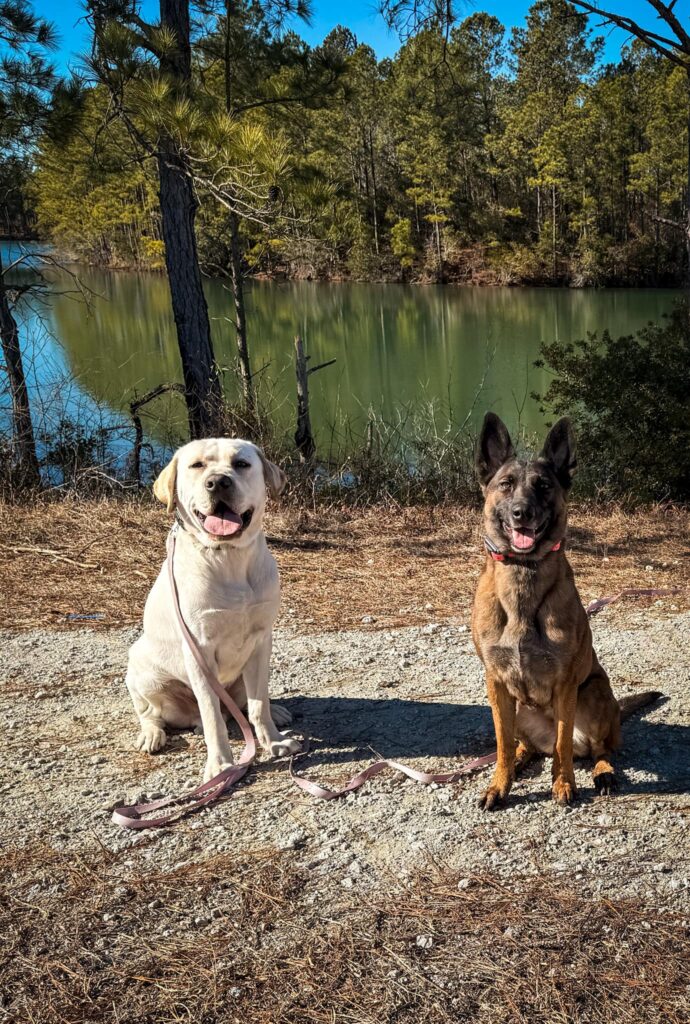The leash: one of the most commonly used yet least understood tools in dog ownership. It’s more than just a way to keep your pup from bolting—it’s a powerful communication device that can transform your relationship with your dog. It’s often one of the first skills introduced and refined to establish trust, control, and communication between dog and owner. If you’re here looking for tips on dog training, you’re in the right place!
Let’s dive into everything you need to know about leash training
Why Leash Training Is So Important
It’s More Than a Walking Tool
Most of us think of the leash as a way to take our dog for a walk or prevent them from running away. While that’s definitely important, the leash can be so much more. Think of it as your way of communicating with your dog—like holding a toddler’s hand in a busy parking lot.
Builds Accountability and Self-Discipline
Dogs don’t come into the world knowing how to live in it. They act on impulse, whether it’s darting out the door or jumping on guests. A leash helps teach accountability, structure, and self-discipline by giving your dog clear boundaries.
Choosing the Right Leash
Standard Leash
For basic training and everyday use, a standard 4-6 foot leash made of nylon or leather works perfectly.
Long Leash
When working on recalls or practicing commands like “stay,” a long leash (15-30 feet) is a game-changer.
Harness vs. Collar
Depending on your dog’s size, breed, and temperament, you might opt for a harness for more control or stick to a collar for simplicity. Choose what works best for you and your dog.
Leash Training Basics
Start Indoors
Before taking it outside, practice leash training in a distraction-free environment like your living room. This helps your dog get used to the feeling of the leash and your guidance.
Keep Sessions Short
Dogs have short attention spans. Aim for 5-10 minutes per session to avoid overwhelming them.
Reward Positive Behavior
Use treats and praise to reinforce good behavior, like walking calmly beside you or responding to leash pressure.
Step-by-Step Guide to Leash Training
1. Introduce the Leash
Let your dog sniff and explore the leash before attaching it. Pair it with treats to create a positive association.
2. Teach “Loose-Leash Walking”
Your goal is to have your dog walk beside you without pulling. Use gentle leash pressure to guide them back to your side when they wander too far.
3. Correct Pulling
If your dog pulls, stop walking immediately. Wait for them to return to your side or loosen the leash, then continue. Consistency is key!
4. Use Verbal Cues
Introduce commands like “heel” or “let’s go” to signal when it’s time to move or stay close.
5. Practice in Different Environments
Gradually introduce distractions like other dogs, cars, or people. Start in low-distraction areas before moving to busier locations.
Common Leash Training Challenges
Pulling
Pulling is one of the most common issues dog owners face. Address it by stopping and waiting until the leash loosens, then resume walking.
Distractions
If your dog gets distracted by every passing squirrel, carry high-value treats to keep their focus on you.
Fear or Anxiety
Some dogs may feel nervous about being on a leash. Be patient and use positive reinforcement to build their confidence.
Leash Training for Specific Situations
Teaching Recall
Use a long leash to practice recall commands like “come.” Start in a quiet area and gradually increase distractions as your dog improves.
Addressing Jumping
If your dog jumps on guests, keep them on a leash and guide them into a sit before allowing any interaction.
Walking in Crowded Areas
When navigating busy spaces, keep the leash short and your dog close to maintain control and prevent accidents.
Why Professional Dog Training Can Help
Expert Guidance
Sometimes, leash training can feel overwhelming. That’s where professional dog trainers can step in. They provide expert guidance tailored to your dog’s unique needs.
Correct Bad Habits Early
A trainer can help identify and address issues like pulling, lunging, or fear on the leash before they become ingrained habits.
Faster Results
With professional support, you can make faster progress, ensuring you and your dog enjoy stress-free walks sooner.
The Leash: Your Most Powerful Tool
Think of the leash as your secret weapon. Whether you’re teaching sit, stay, or tackling behavioral issues like jumping, the leash provides structure and clarity. It allows you to guide and correct your dog without creating conflict.
Leash training is about more than just taking your dog for a walk—it’s about building communication, trust, and mutual respect. With the right techniques, tools, and a little patience, you’ll set your dog up for success. If you’re struggling or want to speed up the process, consider reaching out to AvidDog Dog Training in Wilmington NC, to get professional help.
At the end of the day, the leash is more than just a tool—it’s the key to a well-behaved, happy dog. So grab your leash, head out the door, and start making strides together!
FAQs
1. How long does it take to leash train a dog?
Every dog is different, but with consistent practice, most dogs show significant improvement within a few weeks.
2. What’s the best leash for training?
A standard 4-6 foot leash works for most training scenarios. For advanced commands like recall, a long leash (15-30 feet) is ideal.
3. How can I stop my dog from pulling on the leash?
Stop walking immediately when they pull. Wait for the leash to loosen, then continue. Consistency and positive reinforcement are key.
4. Can professional trainers help with leash training?
Absolutely! Trainers provide personalized techniques to tackle your dog’s specific challenges.
5. What if my dog is afraid of the leash?
Introduce the leash gradually with treats and praise to build a positive association. Be patient and take it slow.
Jenny Klamm, owner of AvidDog Dog Training, has been professionally providing dog training in Wilmington, NC, and surrounding areas since 2017. Passionate about ethical and effective training, she specializes in rehabilitating dogs with aggression, anxiety, and reactivity. Jenny helps dog owners build trusting bonds with their pets through compassionate training. Book your free consultation today! https://aviddogtraining.com/contact-us/.




